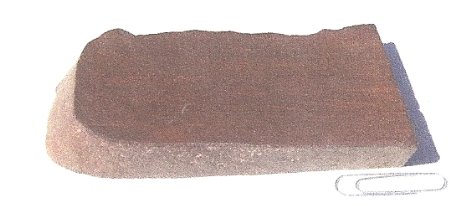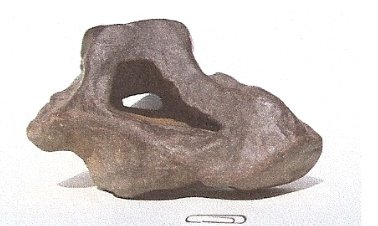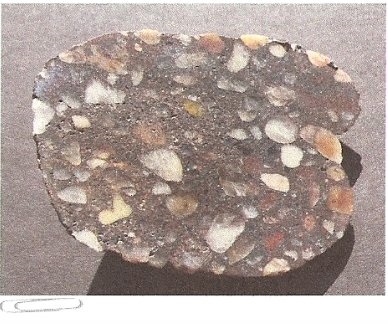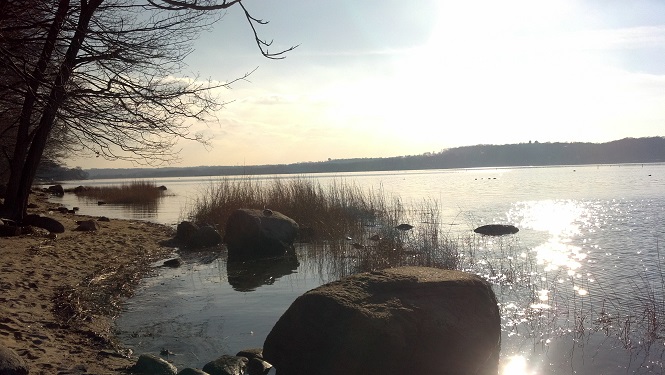The "Puddingstone Story"
Three Facies of Mud
A facies is defined as the environmental condition under which sediment develops. There were three facies, or stages of Cretaceous mud flows indicated in the cobbles and slabs deposited here as part of the Wisconsin glacial drift. These do not belong to any formation on Long Island or Connecticut; therefore it is most likely they originated somewhere in between, in the location of today's Long Island Sound at the northern extent of Cretaceous deposition.
This conglomerate is a product of one local event and likely consists of a single layer of limited thickness. The pebbles of the "Puddingstone" slabs are often found worn flat on one side of the slab but not as worn on the other.
The fabric of this rock therefore suggests that mud flowed into a gravel deposit over 70 million years ago during the Cretaceous. The resulting conglomerate later served as the river bed of a vigorous Pleistocene melt water stream that ran along the melting edge of the Illinoisan age glacier approximately 120,000 years ago. Eventually it was broken up by undercutting current and the edges of the fragments rounded by abrasion. Finally, these fragments were picked up, transported a relatively short distance, and deposited along Long Island's North Shore by the last Wisconsin age glacier some 25,000 years ago. It is classified as a diamictic conglomerate, which is "labelese" for mud supported conglomerate.

(1) Pre-flood "Ironstone or Bog Iron" facies: formed in the anaerobic, quiet iron-rich environment of Cretaceous bogs. It is laminated and consists of flocculates, clay and abundant wind blown silt.

(2) Mud flow facies: deposits of turbulent movement of mud and debris. Unlaminated with contorted shapes containing hollow spaces where woody tissue has been removed by decay.

(3) Post flood "Puddingstone" facies: primarily composed of mud supported rounded quartz pebbles in which the mud matrix flowed into deposits of a "choked" river.
| Garvies Point Musem & Preserve | George J. Allgaier |
| Museum Abstract III | Curator of Geology |
| Photography by Lisa Nordstrom | |
| Conservator |

